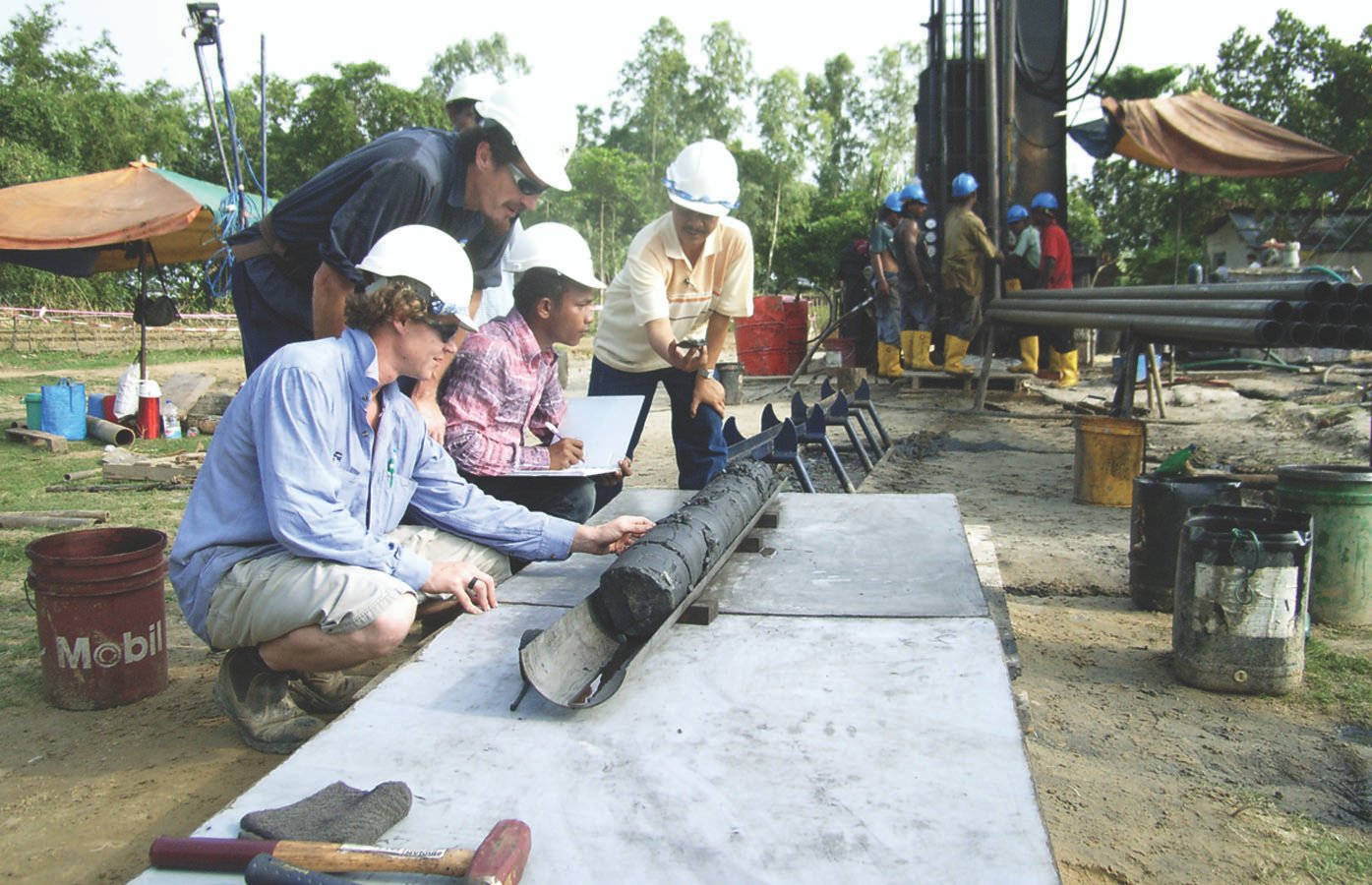
Among all options, mining hugely untapped superior-quality coal resources must be the top priority now. Exploring and developing petroleum resources offshore will take 8-10 years even if Bangladesh can conclude PSCs by 2026, Even successful exploration of Petroleum onshore may not be enough to meet huge demand now or in the middle term. Extensive development of renewable energy cannot replace fossil fuel requirements till 2040. Bangladesh does not have obligations to reduce emissions for its insignificant carbon footprint. The decarbonization process may not necessarily be accelerated. Bangladesh has about 3 billion tonnes of discovered coal resources at 5 mines. If exploited by applying state-of-the-art mining technology, the coal seams buried at shallow, minable depths can ensure the generation and supply of 10,000 MW of coal-based power for 50 years. Extensive studies at Phulbari by accredited mining consultants evidenced that mining can be done by addressing all environmental and social impacts. Right across the border in West Bengal, Bihar, and Jharkhand, several open pit mines have been in safe operation for years. Some mined areas have turned into green sanctuaries after rehabilitation. Successive governments since 2005 remained hesitant and perplexed in making the required political decisions. Precious time has been wasted in the name of coal policy formulation. Experts observe that the Mines & Minerals Act and Policy have enough provisions for mining.
Bangladesh’s coal resources are in the high-yielding rice-growing areas of greater Dinajpur and Rangpur districts. The soft silty water-bearing topsoil is not ideal for underground mining as has been evidenced at Barapukuria. The extensive techno-economic studies carried out at Phulbari evidenced that it is very much possible to manage impacts on water and cause minimum impacts on agriculture. Phulbari field is in an advanced stage of commencing mining. For many reasons, mining coal from Phulbari and using that coal for power generation must be a top priority national agenda for achieving sustainable energy security. The business-as-usual strategy now may lead the economy to collapse due to a chronic energy crisis otherwise.
Present Mining Operations
The discovered coal fields are situated in the prolific Gondwana basin within 100 square kilometers of the greater Dinajpur and Rangpur districts. The area is very fertile and known for growing good-quality rice. The soft, silty water-bearing topsoil makes underground mining extremely challenging. The active acquirer lying above the coal seams creates concerns about subsurface dewatering. Open-pit mining requires temporary relocation and rehabilitation of mining communities. But all these are manageable and have been successfully done in many countries, including our next-door neighbor across the border.
The coalfield at Phulbari in Dinajpur discovered by BHP Mineral Corporation, one of the leading mining companies under exploration and mining lease with the government of Bangladesh underwent extensive pre-feasibility and feasibility studies. Asia Energy Corporation, a GCM company, was assigned the contract following the contractual provisions submitted Scheme of Development in 2005. The government was due to approve or return it to them with their observations. But nothing has been done in 16 years keeping mining in suspended animation. This can be constituted as a default by the government and the mining company can take the Bangladesh government to the court of arbitration. The BNP-Jamaat government in 2005 mismanaged the matter and can be held responsible for agitating the local people against the mining company which led to BDR opening fire and killing some agitators. An uninformed section of civil society also created myths against mining telling tales. Against the backdrop of the chronic fuel supply crisis, relevant experts, economists, and industrial entrepreneurs repeatedly suggested giving a green signal to mining. But the Awami League government ignored all suggestions. Precious black gold remained buried, and the government is paying through its nose the bills of imported fuel from the global market.

Of the 5 mines, a Chinese company is carrying out mining at Barapukuria applying the Long Wall Top Caving Underground Mining Method though this mine could be the ideal candidate for open pit mining. All types of technical impediments had been created in this mine making it a very expensive mining operation. Yet mine can hardly meet 50% of the needs of the three mine-mouth power plants. Coal is much more costly than imported coal. A government committee constituted by the previous government (Md Mosharraf Hossain Committee) suggested a pilot to open-pit mine at the northern shallowest flank of the mine. But the government chose to ignore it. Underground mining for its very nature induces subsidence and can only recover 25-30% of the resources from multi-seam coal structures having loose roof support.
Mining Initiative at Phulbari
As has been already mentioned the Phulbari coal field remains in a very advanced stage as extensive techno-economic feasibility studies have been conducted by accredited mining consulting companies. These are incorporated into the Scheme of Development (SOD). This writer had the opportunity to go through the lines of the SOD and even hold discussions with the consultants in Australia. All the concerns that are usually raised by the less informed theoreticians and environmentalists have been duly addressed. International consultants usually have professional liability insurance indemnifying them from impacts against advice they provide. Here we quote some of the important aspects of SOD.
Fact Sheet: Water Management
· Phulbariopen pit mine requires the groundwater level to be locally drawn down to maintain safe and dry working conditions in the mine
· The potential impacts of mining operations on water resources have been carefully assessed and an extensive water management plan has been developed
· Aquifer injection, a proven water management technique, will be employed to restrict water level drawdown and keep it to an acceptable level
- Round the year free irrigation water will be made available to affected farmlands. An extensive network of distribution channels will be established for efficient delivery
- A piped reticulation system will be developed to deliver water to affected villages/households and community places for domestic uses
· Excess clean water will be released in the water courses to maintain the natural flow regime to the downstream
· No untreated water will be released from the mine site. All mine water will be collected and treated before it is discharged to ensure it meets national wastewater quality standards
· Phulbari Water Balance Study confirms that there is water available from dewatering operations to support large-scale mine-mouth power generation
Efficient Dewatering
· AQUIFER DEWATERING FOR SAFE MINING. The Project will require dewatering of aquifers overlying the coal deposit to maintain safe and dry working conditions in the mine pit. Estimated groundwater withdrawal:
§ 550 ML/ day (Dry Season)
§ 598 ML/ day (Wet Season)
§ PHASED DEWATERING STRATEGY. Based on groundwater modeling and dewatering requirements, the project’s dewatering strategy has been developed. Dewatering bores will be installed in sequences over the mine life. Once the mine advances, some of the bores behind will be turned off, new bores will be installed, and the impact zone will be shifted accordingly
· IMPACTS ARE MANAGEABLE. Groundwater drawdown resulting from mine dewatering will reduce groundwater availability to the Phulbari Township, villages, and local farming community. Several proven measures will be implemented to manage the impact and ensure abundant water for community uses
· NO DESERTIFICATION OR ARIDITY in the Project area and beyond due to aquifer dewatering. There will be more vegetation, more forests, more productive agriculture, and water bodies/fish production. Signs of desertification do not appear, neither in Dhaka City (after decades of large-scale groundwater withdrawal) nor in open-pit lignite mines in Germany (after 50 years of dewatering) or Neyveli lignite mine in India (after decades of groundwater pumping)
· NO ARSENIC PROBLEM. Currently arsenic is not a problem in the Project area. An independent study confirms that the groundwater in the area is characterized by a very low concentration of arsenic, and there is no potential hazard posed by arsenic concentration in groundwater due to proposed mining activities, including dewatering operation
AQUIFER INJECTION TO RECOVER GROUNDWATER LEVEL
· About 30% of the extracted clean groundwater will be put back into the ground (aquifer) at a distance from the mine to maintain natural water level and therefore restrict water level drawdown to the near mining area
· Aquifer injection is a proven water management techniquebeing successfully used in many large-scale open pit mines in the world. For example, over 50 MCuM/year of water is injected into some 150 recharge wells and infiltration trenches to protect wetlands near the open-cut lignite mines in Germany
The studies also revealed that ADEQUATE WATER FOR IRRIGATION and CLEAN WATER FOR THE COMMUNITY will be available. Water will also be available for environmental use. There will be provision for extensive stakeholders’ involvement.
Fact Sheet: Agriculture
· No disruption in agricultural activities - cultivation will be allowed on acquired Project land before mining and on rehabilitated land after mining
· No land loss as open pit mining is just a temporary use of land. Land used for mining operations will be progressively rehabilitated and brought back to a state suitable for productive uses including agriculture
· Farmers will enjoy abundant free irrigation water throughout the year
· Support will be provided to farmers with training, agricultural inputs (quality and timely seeds, fertilizers, pesticides), technical know-how, and cultivation methods
. Agriculture will be diversified. Current crop yield is expected to be at least double with improved and timely input support and technical guidance from the Project
* An independent study suggests there will be no loss of overall volume of agricultural production, but rather a significant net gain of production over mine life
Mining will create many jobs for the community. Local business will flourish. Global experience evidence that mining comes as a blessing for the local community as mining companies also carry out extensive Corporate Social Responsibility (CSR) activities.
The above two concerns of water management and agriculture addressed adequately in SOD could be further revalidated by another independent consultant over the past 16 years. There is still a possibility of doing that now. All that is required is a bold and smart government decision. Phulbari field can be turned into mine within 6-9 months. The interim government has no political ambitions. For the greater national interest, the decision to mine at Phulbari must no longer be delayed.
Some studies have been carried out for Khalaspir and Dighipara. These mines can be used underground or in a mixed mining method. The study reports relating to the government may be further reviewed. Studies evidence that extraction of Coal Seam Methane or Coal Bed Methane is not feasible as methane has migrated from the fractured coal seams. The prolific Jamalganj field can be mined using underground mining methods.
Conclusion
In a recent brainstorming about coal mining, the Energy Adviser of the interim government did not sound optimistic about reaching a positive decision. We believe that the interim government is best placed to take that bold decision as techno-economic reality supports mining domestic coal as the best fuel option now. This article evidences that experts prepared strategies for water management and agriculture. Bangladesh for its long-term energy security and economic development needs to decide on mining its coal. The present chronic energy crisis has already caused many industries to shut down and many job losses. In the prevailing global situation, mining should start now or never in Bangladesh. If started in early 2026 first coal can be on the surface by 2030 that can feed 5,000-7,000 MW mine-mouth power plants. That will relieve the power sector from exclusive reliance on imported fuel.
Download Cover Article As PDF/userfiles/EP_22_19_Cover Article.pdf




